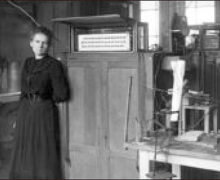
Tour Bibliotecario
Library Tour
Ante el avance del libro digital y el audiolibro, los amantes de los libros impresos estamos perdiendo la sensación de ingresar en una biblioteca “física”, donde sentirnos como un niños en una fábrica de chocolates, por esta razón para quienes deseen en el siglo XXI hacer un “Tours Bibliotecario”, les recomiendo las grandes bibliotecas del mundo que, gracias a Gutenberg y su imprenta, han acumulado millones de ejemplares, para disfrute de quienes “sufrimos” el vicio de la lectura.
Por supuesto que existieron bibliotecas memorables, como las de Uruk, Nínive, Babilonia, Grecia o Alejandría, (destruida en el año 641 y reconstruida en el 2002), pero todavía estamos a tiempo de recorrer las que aún existen…
Biblioteca Británica.
Comencemos por la Biblioteca Británica, 96 Euston Road, Londres, fundada el 1 de julio de 1753, ya que es la que contiene más de 170 millones de títulos diferentes, en todas las lenguas conocidas, recorrerla no será fácil ya que tiene 625 km de estanterías, que crecen a un ritmo de 12 km. anuales, y espacio para albergar más de mil lectores sentados. Allí podemos encontrar material de 300 a. C. o la Carta Magna o el cuaderno de notas de Leonardo da Vinci.
Biblioteca del Congreso.
La Biblioteca del Congreso de Estados Unidos, Washington D. C., fundada el 24 de abril de 1800, consta de tres edificios, Jefferson, Adams y Madison, que albergan 162 millones de documentos en 470 idiomas, 68 millones de manuscritos y la colección más grande de libros raros y valiosos, incluidos la primer Biblia editada por Gutenberg y el borrador de la Declaración de Independencia.
Biblioteca de Nueva York.
Ubicada en Manhattan, la Biblioteca Pública de Nueva York, es el resultado de la fusión de la Biblioteca Astor (1854) y de la Biblioteca Lenox (1870), ocupa actualmente un edificio construido en 1877 en la Quinta Avenida. Consta de más de 53 millones de ejemplares, más manuscritos y mapas, en el espacio también funciona un centro de conferencias y eventos. Allí podemos ver el “tren del libro”, que transporta volúmenes desde las zonas de almacenamiento hasta la sala de lectura, apodado “montaña rusa de la literatura”, el sistema transporta 24 coches rojos, que se desplazan sobre rieles de forma automática tanto en horizontal como en vertical y permiten acercar los volúmenes guardados en sus galerías subterráneas, ubicadas bajo el parque Bryant.
Bibliotecas Rusas.
La Biblioteca Nacional de Rusia en San Petersburgo, deriva de la antigua Biblioteca Imperial fundada por Catalina la Grande en A2
1795 y cuenta con 35 millones de documentos, siendo la segunda más importante de Rusia, pero la más antigua del país. Sus criterios bibliográficos son básicamente los de coleccionar materiales sobre la historia, cultura y literatura rusa y materiales científicos y eruditos en otras lenguas, incluyendo importantes manuscritos bíblicos hasta incunables y obras renacentistas y barrocas.
Biblioteca del Estado de Rusia, situada en Moscú, abrió sus puertas en 1862, pero recibe este nombre desde 1992, ya que desde 1922 fue la Biblioteca Estatal de la URSS. Sus 275 kilómetros de estanterías guardan más de 45 millones de ejemplares en 247 idiomas, 13 millones de periódicos, 350.000 grabaciones musicales y más de 150.000 mapas. Desde 1925 hasta la fecha, una copia de todo lo publicado la antigua Unión Soviética y la nueva Federación Rusa, debe ser depositado en esta biblioteca.
Como amante del libro impreso, recomiendo recorrer esta bibliotecas que, poco a poco, van transitando su transformación en museos literarios, donde nuestros nietos descubrirán con asombro las letras impresas de un libro.
Given the advancement of digital books and audiobooks, lovers of printed books are losing the feeling of entering a “physical” library, where we feel like children in a chocolate factory, for this reason for those who want to in the 21st century to do a “Librarian Tours”, I recommend the great libraries of the world that, thanks to Gutenberg and his printing press, have accumulated millions of copies, for the enjoyment of those of us who “suffer” from the vice of reading.
Of course there were memorable libraries, such as those of Uruk, Nineveh, Babylon, Greece or Alexandria, (destroyed in the year 641 and rebuilt in 2002), but we still have time to visit those that still exist…
British Library.
Let’s start with the British Library, 96 Euston Road, London, founded on July 1, 1753, since it is the one that contains more than 170 million different titles, in all known languages, going through it will not be easy since it is 625 km long. shelves, which grow at a rate of 12 km. annual, and space to house more than a thousand seated readers. There we can find material from 300 a. C. or the Magna Carta or Leonardo da Vinci’s notebook.
Library of Congress.
The United States Library of Congress, Washington D.C., founded on April 24, 1800, consists of three buildings, Jefferson, Adams, and Madison, which house 162 million documents in 470 languages, 68 million manuscripts, and the largest collection of rare and valuable books, including the first Bible edited by Gutenberg and the draft of the Declaration of Independence.
New York Library.
Located in Manhattan, the New York Public Library, the result of the merger of the Astor Library (1854) and the Lenox Library (1870), currently occupies a building built in 1877 on Fifth Avenue. It consists of more than 53 million copies, plus manuscripts and maps, in the space there is also a conference and events center. There we can see the “book train”, which transports volumes from the storage areas to the reading room, nicknamed the “literature roller coaster”, the system transports 24 red cars, which move on rails automatically both in horizontally as well as vertically and allow to approach the volumes stored in its underground galleries, located under Bryant Park.
Russian Libraries.
The National Library of Russia in Saint Petersburg derives from the old Imperial Library founded by Catherine the Great in 1795 and has 35 million documents, being the second most important in Russia, but the oldest in the country. Its bibliographic criteria are basically to collect materials on Russian history, culture and literature and scientific and scholarly materials in other languages, including important biblical manuscripts to incunabula and Renaissance and Baroque works.
Russian State Library, located in Moscow, opened its doors in 1862, but it has received this name since 1992, since since 1922 it was the USSR State Library. Its 275 kilometers of shelves store more than 45 million copies in 247 languages, 13 million newspapers, 350,000 musical recordings and more than 150,000 maps. From 1925 to date, a copy of everything published by the former Soviet Union and the new Russian Federation must be deposited in this library.
As a lover of printed books, I recommend visiting these libraries that, little by little, are transforming into literary museums, where our grandchildren will discover with amazement the printed letters of a book.
























